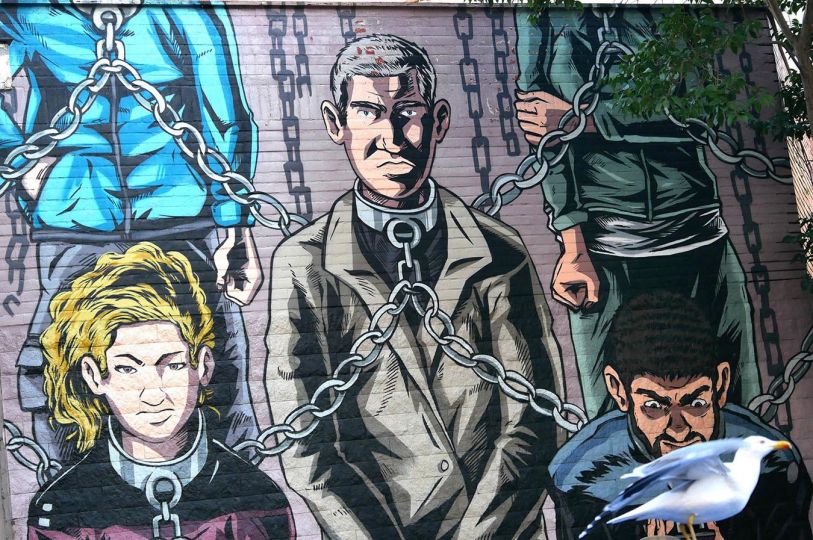The CRAF, the Centro di Ricerca e Archiviazione della Fotografia has just awarded its International Award of Photography for 2024 to Richard Kalvar.
With the award comes an exhibition in the Friuli town of Spilimbergo, north of Venice.
Richard’s will last until January 26, 2025.
He sent us his images and text.
JJN
I never studied photography, I just happened to fall into it. In 1965, I had dropped out of college and was back in New York looking for a job. A friend told me about a French fashion photographer that he had worked for who had just fired his latest assistant. I didn’t know the first thing about photography, but I was 20 years old and had nothing to lose, so I want to see him. And what do you know? He hired me. His name was Jérôme Ducrot, he was an excellent photographer, and he operated on instinct. That was my opening. In the slightly less than a year that I worked for him I learned many things, one of which was that I would never be a fashion photographer. But he let me borrow his cameras, and I began using them to explore the streets of New York. And I started looking at books.
I managed to save up a little money from the pittance that he paid me and I left the job to go hitchhiking around Western Europe. Jérôme had given me an old camera as a going-away present, but I barely knew what I was doing. When I had nothing better to occupy me I would wander around and snap a few pictures here and there of things that caught my eye. By the end of ten months when my money ran out, I knew I was a photographer.
But what kind of photographer? During the time I spent in Europe (and Morocco) I hadn’t seen a single picture that I had shot. I had sent packages of exposed Tri-X to my father in New York, who held onto them for safekeeping. When I returned to the City I got a short-term job as a receptionist at a very good black-and-white photo lab. I had my film developed, and the boss let me stay on with the night shift to learn how to print.
Looking at my contact sheets for the first time was a traumatic experience. All I saw was a huge sea of mediocrity. But then I took out my magnifying glass and my grease pencil and got to work putting little marks under any frames that seemed vaguely interesting. Then I went through that reduced selection, lengthening the marks under the better images, and then looking only at those, and so on, extending the lines, adding them first to one side and then to the other, until I eventually wound up with a very small number of images that were totally enclosed on all four sides by red grease-pencil lines. These pictures suddenly took on a new life totally separate from the surrounding mass of uninteresting stuff. I loved them, and I realized that by making this selection I had unconsciously defined what really interested me, which I discovered was the same way of looking at the world that had been mine in the time before I knew anything about photography.
As I continued taking pictures, I came to understandings about the nature of the medium, about its uniqueness among the arts, and about its limitations that in fact opened up new possibilities. The unposed pictures that I and others took were rooted in reality, but in fact, completely separate from it. They were rectangular windows that ignored everything outside the frame, that showed a tiny frozen-forever instant that had been extracted from the moving, breathing, noisy, colored three-dimensional world. They looked real, but weren’t. And I saw that playing with that paradox had unintentionally become the driving force of my work, taking unposed pictures that told different stories from those that may have actually been taking place.
This is not to say that photographs can’t represent things and situations meaningfully. They can and they do. But they do so imperfectly and subjectively, driven by the feelings of the photographer and limited by the very nature of the medium. That might be considered a defect, but for me, it was an opportunity: to dance along the edge between reality and appearance.
In 2007 I had a sort-of retrospective show at the Maison Européenne de la Photographie (the MEP) with an accompanying book published by Flammarion, Earthlings (Terriens in French). “Sort-of” because the order of the pictures was neither chronological nor geographical. Unfortunately, I’ve continued to work since then (and have rediscovered some pretty good old pictures), so that when I was offered a new retrospective in Spilimbergo, Italy on the occasion of my being named International Photographer of the Year by the CRAF. I had to update the selection with about 60% of the images from Earthlings and the rest either new or new/old. At this rate I look forward to having a new sort-of exhibition in about 15 years.
Richard Kalvar
CRAF – Centro di Ricerca e Archiviazione della Fotografia
Piazza Castello
33097 Spilimbergo PN, Italy
https://www.craf-fvg.it/
https://www.craf-fvg.it/mostra/richard-kalvar-viaggio-in-un-mondo-fantastico
















